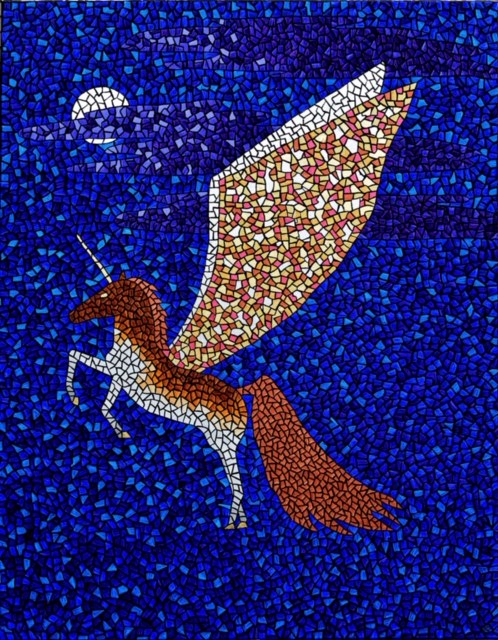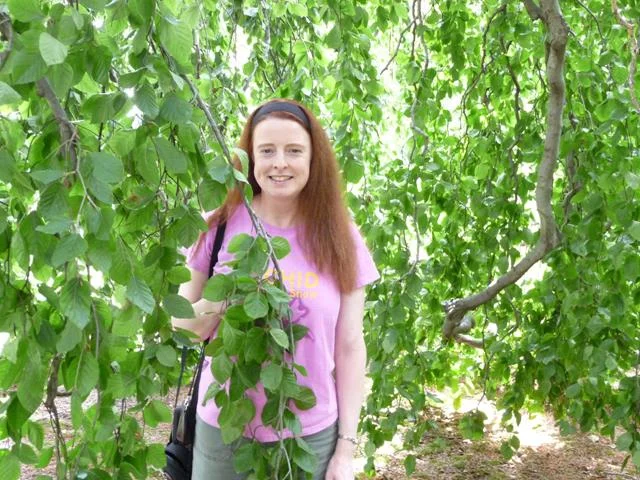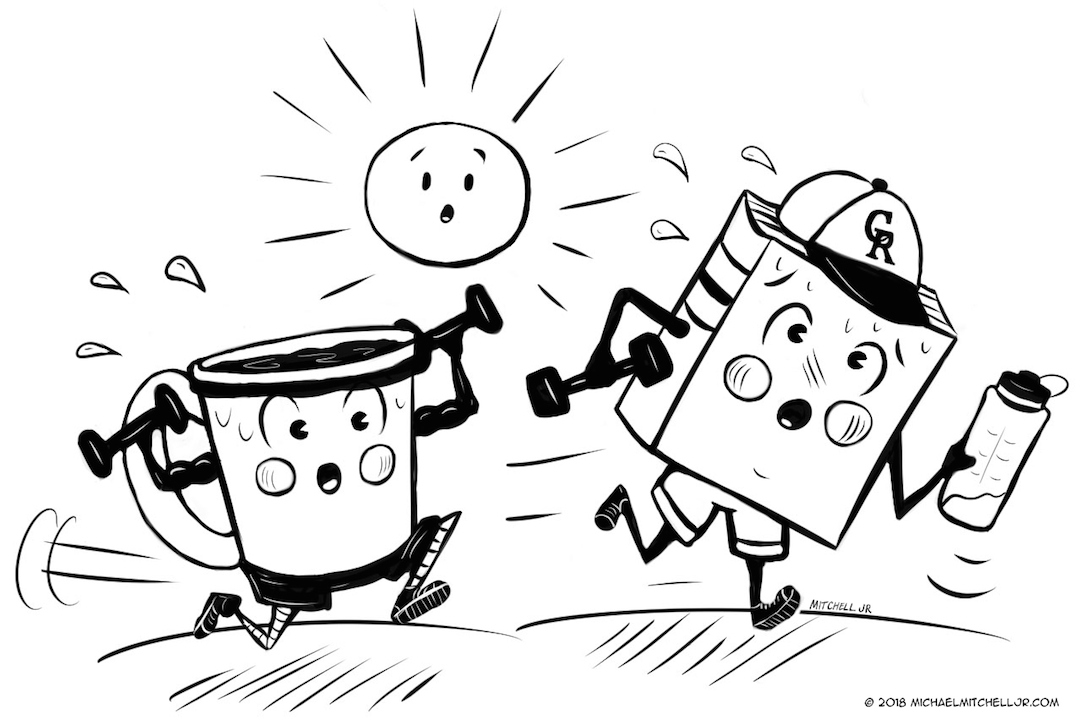Hi, I’m Michael, and welcome to Let’s Talk Process, Issue No. 8! Thanks so much for joining me for the latest issue of my artist interview series. You can read more about me here.
My goal for this series is to dig deeper and explore how various creative people specifically approach their daily work. With that in mind, the questions for Let’s Talk Process center around the unique creative processes of artists & authors, how and when they work, routines, and inspirations.
This issue, I’m excited to have author & artist Ken Priebe as my guest!
Ken studied art, film and animation at University of Michigan School of Art & Design and Vancouver Institute of Media Arts (VanArts). He has been involved in the animation industry for many years as an instructor, historian, and author, and has animated on several short films for Scholastic/Weston Woods through Bigfott Studios. He resides with his family near Vancouver, Canada, and is a self-described “a bit old-school” artist, using traditional mediums of pencil, paper, and ink for the work he loves to do.
Hi Ken! Your wonderful children’s book of illustrated poetry, Gnomes of the Cheese Forest and Other Poems, was published last year. How did the overall concept for the book begin?
The idea to start working on a book of poetry grew out of having kids and reading children’s books out loud to them, particularly books I grew up with myself. Works by authors like Dr. Seuss, Maurice Sendak, Mercer Mayer, and Shel Silverstein were particular favorites of mine, and when I started sharing them with my own kids, I fell in love with the rhythm of the meter and the words when they are read out loud.
There was also a more recent book called The Tomato Collection by Kevin Kammeraad, who is a writer and puppeteer from my home state of Michigan. My mom is a teacher there, and Kevin had visited her school, so she sent us a copy of his book. The combination of witty and poignant poems in that book got me thinking it might be a good idea to try something like that, and once I started, I literally couldn’t stop. It was like a bottle cork popped off to unleash a flurry of ideas I didn’t even know I had, and it just kept going from there.
As both a writer and artist, how do you approach scheduling your time for both? What does your normal daily (or weekly) routine look like?
Well, like many writers and artists, I do have a fairly demanding day job, which is in communications and marketing at a media arts college here in Vancouver called VanArts. I also occasionally work on freelance animation projects or teach online courses for animation, and I’ve been doing this for about 20 years. Plus I spend time with my family and various activities with my kids. So, as far as writing and drawing my own stuff? Whenever I get a chance! Primarily in the evenings and on weekends I chip away at whatever projects I’m excited about or focusing on at that time. It all balances and works out pretty well, actually.
This leads to a related “chicken or the egg” process question: Do your illustrations inspire the poems, or do the poems lead to illustrations? Which do you typically create first?
Good question...a bit of both! Sometimes I’ll do a drawing and a poem idea will come from that. Other times, I’ll just think of an idea for a poem, and then decide if it should be accompanied by a drawing. Not all of my poems have drawings to go with them. Some of them are more abstract, or work better simply leaving the visuals to the imagination of the reader.
What were your guiding rules or criteria for writing your poems? Did this ever lead to a poem that “didn’t make the cut” because it didn’t quite fit the tone or vision of the book?
Yes, there are plenty of poems that get cut, or that don’t work to my liking. There are also poems which turn out well and I like them structurally, but they don’t fit with the tone of the whole book. Occasionally I might write a poem and decide it’s a complete disaster, but something leads me back to it and I re-work it, and then it works beautifully. This happened recently with a poem I had abandoned, and all it took was changing the rhyming pattern to turn it around and make it into something I was happy with.
If not working with outside editors or deadlines, do you set self-imposed goals or deadlines for your process along the way?
For the process, not so much. I let things grow organically and let them brew properly until I feel they’re ready. Sometimes it helps to leave the project alone for a few weeks and come back to it with a fresh perspective. When it came to actually taking the dive to get my first book published, I based a few deadlines on certain discount codes that IngramSpark (the platform I use) set up, so I could make steps to set up or upload files before they expire. That helped to actually pull the trigger and get it out there.
Do you have any particular rituals, locations, and/or favorite tools that are necessary for your creative process?
Much like the time to actually work, I just work wherever I can. I don’t have a studio or a dedicated writing/drawing desk. I either work at the dining room table or curled up in a chair or couch, sometimes on my bus commute, or in bed. More often than not, I listen to music while I draw. I draw everything in pencil first, and the only pencils I draw with are blue Col-erase pencils. These pencils are popular for hand-drawn animation, which is my background, so I’m gotten quite used to using them. They are just the right amount of softness to get really great results from. For inking I mostly use Micron ink pens, and sometimes a brush pen for large black areas. I also combine china marker with ink for certain drawings. Most of the drawings in Gnomes of the Cheese Forest are ink-only, but my next book will have a lot more of this ink/china marker combo I’ve grown to enjoy.
When you have a creative block or lull in your process, what are some things that help you get back on track?
Going for a walk helps, or just sitting and being silent for awhile. So does listening to music, watching movies, or looking at other books. A huge help to me has been the audio archives from Hutchmoot, an annual gathering of artists hosted by an arts & faith collective called The Rabbit Room. https://rabbitroom.com/ I have several favorite recordings of talks and panel discussions by artists from this group, who talk in great depth about how they deal with self-doubt, anxiety, and creative blocks. It’s a well I keep dipping into whenever I get stuck. I also like watching or listening to interviews with people like Colin Meloy, Carson Ellis, Shaun Tan, Maurice Sendak, Madeleine L’Engle, Neil Gaiman, and others. Seeking out interviews on YouTube or other places where they talk about their creative process, what inspires them, and how they deal with the challenges of being an artist...this helps a great deal.
When is a piece of art or poem “finished”? How do you know?
I think you just “know.” It’s a mystery. Madeleine L’Engle talks about being a “servant of the work” and listening to it. Michaelangelo apparently said something about the sculpture already being in the marble, and his job was simply to let it out. The work knows more than you do, and your job is simply to serve it, and then share it.
A big thank you to Ken Priebe for being a part of Let’s Talk Process!
Where to find Ken and his work:
Book Blog:
https://gnomesofthecheeseforest.blogspot.com/
Social Media:
https://www.instagram.com/booksbykenpriebe/
https://www.facebook.com/booksbykenpriebe/
If you enjoyed this interview, feel free to like & comment below and share the interview link on social media!


























